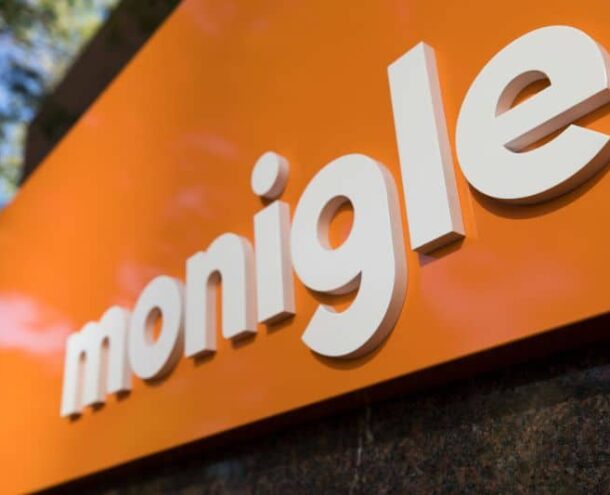Your Merger & Acquisition Playbook: Five Approaches for Using Brand to Maximize Business Value

Brand can be your secret weapon throughout a merger and acquisition process—but only if you wield it right. M&A (Merger & Acquisition) situations are complicated by nature but giving brand a voice (at least in the minds of key decision-makers) can be the difference between realizing business value or leaving it on the table. From evaluating a potential target, to closing and launching a new shared organization, here are the questions you should be asking and the actions you should be taking to ensure you’re using brand to maximize business value at every step.

Target Evaluation:
Ensure brand is strategically front of mind when M&A discussions take shape

From the very beginning, you’ll want to ensure brand is a part of how you approach M&A discussions and decisions. Be prepared by developing a set of criteria for strong M&A targets based on brand purpose, values and identity. In today’s world, elements of fit can be just as important as potential for increasing profit. Ask yourself and your team: will the target bring incremental brand value along with business value? How will it enhance—or diminish—the brand purpose and experience we’ve worked hard to develop? Qualify potential target options through this lens to ensure you’re making decisions based on what will most effectively strengthen and optimize your organization holistically.
(Of course, this assumes you’ve already put in the work to clearly define and establish your brand. If not, you might consider taking the time to put a foundation in place before adding new businesses, brands and offerings to the mix.)
Announcement
Generate excitement and understanding, while reducing anxiety and skepticism

Getting the announcement right is critical in every M&A, with the power to generate excitement or anxiety. It’s the time for over-communication—internally and externally—to ensure people understand the what, when, how and why. It’s also a key place to use brand to create efficiency and ensure messaging feels strategic, authentic and connected to your audiences, both existing and new.
A communications plan rooted in your brand foundation and using your brand’s tone of voice will feel familiar and reassuring. It will tell people that while change is coming, they can trust that the important things (like transparency) will remain. At this time, you should simultaneously begin developing a plan for quantifying future brand decisions with your newly growing portfolio. Identify scenarios that could arise, and work through the brand implications. Can the partner brand be integrated into the existing strategy? Or, will new elements have to be considered? How will we govern this expanding portfolio of experience?
At this stage, remember that one person can’t do it all. Form a brand steering committee to work with operational and integration ones and establish an implementation team to ensure that all of the execution details are considered. Determine what can be handled in-house and where external resources are needed. Work with Legal to make sure nothing that could impact brand has been overlooked. Communicate, collaborate, and get people excited about what this means for the brand.
Closing
Continue communicating and begin implementing the brand transformation plan

At this point, things start to feel real. But remind yourself (and key stakeholders) that everything doesn’t have to be done by the close date. More often than not, closing is a starting point—and a great time to consider how brand should drive and integrate with the overall transformation timeline. In today’s environment, some of the more significant changes related to brand in an M&A context (like signage) are being rolled out over longer timelines as a way to avoid overburdening integration budgets.
Start by establishing a high-level timeline that will take you all the way to launch day and beyond. Prioritize communication and transparency as you begin implementing changes. Maintain momentum with frequent check-ins to help employees feel involved—and use those touchpoints to gather proof points that will support the brand story. Consider creating a brand ambassador program to provide a formal channel for two-way communication.
Closing is also the perfect time to develop baseline metrics that will help measure brand and business initiatives post-launch. Based on these measurements, which are best collected quantitatively to serve as a baseline for the long-term, you’ll know when—and how—to make strategic pivots and adjustments that will optimize brand in the future.
Launch:
Celebrate the transformation to build awareness and engagement; reveal the new shared brand internally and externally

If you’ve made it to launch day, you already know—it’s not about a change of symbol, it is a symbol of change. Launch is the time to elevate and celebrate brand and the experiences we create, whether it’s entirely new or just newly shared. Focus on converting the most important experience touchpoints to the new brand for launch and develop a plan for updating the elements that remain.
Learn More: 7 ways to unlock brand value through your brand center
Before launch day, you’ll need to finalize the foundational elements of the go-forward brand and establish a comprehensive plan for sharing it with the world. Remember, it’s about making people feel like they are a part of the change, rather than change being forced on them. In the weeks leading up to launch, brainstorm with your team about the most effective ways to create understanding and engagement. You will also want to have a plan in place for brand training, governance and ongoing brand management. The steps you take to educate and empower people to understand and use the brand on day one will maximize success on day two and beyond.
Post-Launch:
Complete the migration and continue to live the brand

A brand transformation is never “complete”—and what happens post-launch will define the success of your M&A. Post-launch, it’s time to ask how you will ensure the ongoing success of your brand and newly combined organization. It pains many to realize that the work after launch day is actually the hardest brand work of all.
Go back to those baseline metrics you set and relentlessly measure, track and evaluate your success. Figure out where your gaps are with feedback loops that allow stakeholders from across the enterprise to share what’s working and what’s not. Then, get going on addressing them. Continue to engage your audiences, and curate examples that celebrate people living the brand. Work shoulder-to-shoulder with your partners in HR to integrate brand behaviors into rewards and recognition programs—a sure way to catch employee attention and keep brand front of mind. If needed, adjust your brand governance processes to ensure the brand continues to shine.
With these steps in mind, brand becomes the guidepost that helps you navigate the complexities of an M&A process with clarity and purpose. And you don’t have to take our word for it. A quick look at some of the most successful M&As in recent memory showcases how brand was used to add value and deliver focus.
Here are just a handful of examples:
- Google: With a focused and clear brand strategy in mind, Google has made a series of advantageous acquisitions over the past decade that have elevated both business and brand strategy. Google CEO Larry Page brings brand to the forefront of every target evaluation by asking himself a question aligned with Google’s brand experience and ubiquity: “Does this pass the toothbrush test? Is it a product you would use daily?” Brands that pass the test (think Android) seamlessly fit into the Google mission and model as the right brand fit.
- Aviva: When Norwich Union and CGU merged to become one of the largest insurance companies in the world, they prioritized involving employees at every level in the building of a new shared brand. They even went so far as to allow their employees to invent the new name for the brand—a risky move (remember Boaty McBoatface?) that ultimately paid off here with internal and external audiences buying into the new brand and experience with enthusiasm and ownership.
- Disney and Pixar: When Disney acquired Pixar, Pixar’s teams worried about the impact such a major change would have on their creative culture. In order to create a smooth transition, leaders from both sides focused on the brand values they shared and built a plan that would accommodate and flex to allow Pixar’s most important brand attributes to live on as behavioral pillars of the newly combined enterprise. Transparent messaging and communication to employees, along with clear transformation planning, allowed the acquisition to run smoothly—and the brands continue to work together seamlessly today.
So, there you have it—the core elements of a playbook for using brand to maximize business value at every step of your M&A efforts. And remember, whether you’re in the midst of M&A talks or not, it’s always good to be prepared by understanding the criteria that a target would need to meet in order to add value to your organization. When you know your brand, you know your direction—and that can make all of the difference.
Does this spark your interest? Are you undergoing an M&A? We’d love to continue the conversation and here what your experiences are in comparison to our insights.



